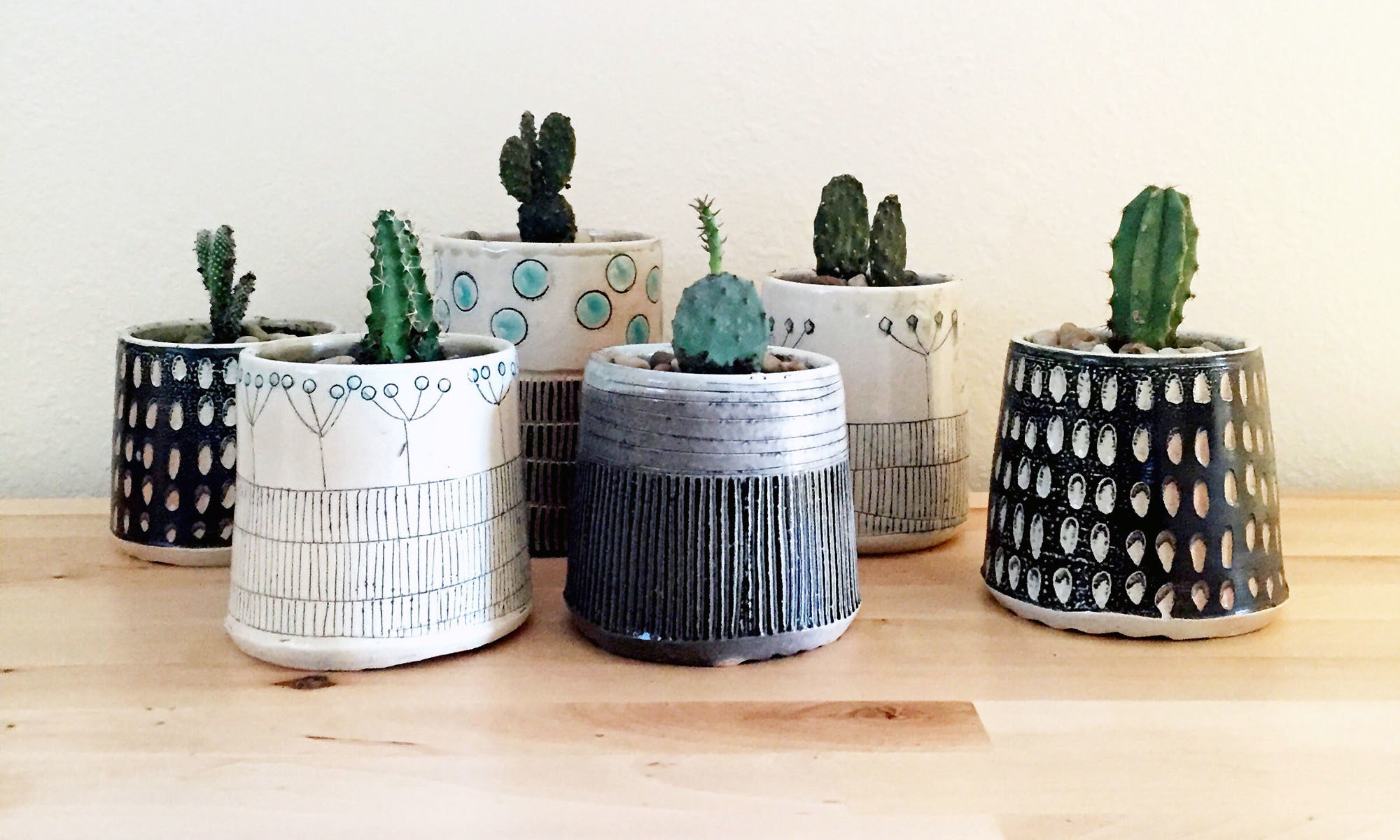I do my fair share of hand building with clay. In fact, my first successes in my ceramics 101 class were because I learned how to hand build using slabs of clay. Success on the pottery wheel came much later.
I’m gearing up for my next soda firing at the guild towards the end of April and will be hand building mugs, bowls and other functional pottery. Paper templates are an easy way to achieve a uniformity in size and shape for hand builders.
I’ve made my own cup templates in the past, but in the interest of time, I decided to peruse Pinterest for templates. Low and behold, I found an online template maker – specifically a truncated cone template that is helpful for hand builders interested in making tapered cups of all sizes.
Why?
I already have a tumbler sized template ready to go, but would like to add some wine/juice cup sized ones. Also, I like drinking wine out of a handmade cup and, frankly I’m too lazy to do the math and draw it by hand.

The makers of the cups in the photo above are clockwise, starting with the light green cup – an old one of mine, Dick Howell, Michael Kline, Kathleen Laurie, Kristin Gruenberger and Jackie Harper.
What I like about this template, even though the site really caters to paper crafts, is that it’s scalable. Users need only enter their desired measurements for the bottom and top diameters and the height in either inches or centimeters.
Here is my wine/juice sized truncated cone template for hand builders:

My template measures 2.5″ in diameter at the base, 3″ up top and 4″ high.
Considerations:
The only tricky parts that users need to account for are how to print a template and clay shrinkage.
Larger templates will not likely fit on an 8.5″ x 11″ letter sized piece of paper, so you will need to either bring it to a printing company like Kinkos or print it out on multiple pieces of paper and piece together.

I guesstimated a reasonable size for my truncated cone template. Originally, I plugged in measurements of 3″(base) x 4″(top) x 4″(height) which was more of a small sized mug. I printed and cut the template out to check if the size works. After printing my first one, I downsized my measurements to 2.5″(b) x 3″(t) x 4″(h). This seems just about right for wine or juice.

I’m not concerned with volume at this point. I just want to make a cup that will hold about 4-5 ounces of liquid. If you are working on a custom order for a shop or gallery, however, you will need to do a bit of math (or use an online calculator) and also understand your clay shrinkage if a specific size is requested.
For further reading, the LaPellas, who I interviewed for Feature Fridays, have an easy clay ruler tutorial on their blog. Or, if you know your clay body’s shrinkage, you need to take this into account to make a template that accounts for your clay body’s shrinkage.
Finishing details:
I like to laminate my templates with packing tape so that I can reuse them over and over. They’re water resistant and won’t warp or buckle after placing it on damp clay. Simply cover the front and back of the paper template with packing tape, being careful to overlap the tap about 1/8″. Trim the excess tape from the template afterwards.
Stay tuned for a tutorial on my hand building process.

















